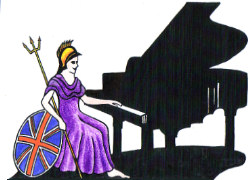Teachers, Accompanists and Piano Entertainers in the UK

UK Piano Page

Browse Locations England » Gloucestershire » Lydney
7 Castle Crescent
Lydney, Gloucestershire GL15 6UA
England
I teach the piano to adults and children from my home in St Briavels
152 - 160 Wardour Street
Soho, London W1F 8YA
England
For nearly two hundred years we have sold upright
184 St. Ann's Road
Haringey, London N15 5RP
England
J. Reids supply new and fully restored pianos from
Unit 15 Wroslyn Road Industrial Estate
Wroslyn Road
Freeland, Oxfordshire OX29 8HZ
England
Buying a piano is a big investment – financially
Unit 2, Crown Centre
Bond Street
Macclesfield, Cheshire SK11 6QS
England
Offers a hand-picked selection of prestigious
5 High Bank Side
Off St. Petersgate
Stockport, Cheshire SK1 1HG
England
we supply all styles of Acoustic Piano, from
Music Festival for performers and guests Our 10th
18-06-2022 01:30PM
The Morecambe Bay Piano Group was set up to extend
11-12-2021 02:00PM
The Morecambe Bay Piano Group was set up to extend
08-01-2022 02:00PM
The Morecambe Bay Piano Group was set up to extend
12-02-2022 02:00PM
The Morecambe Bay Piano Group was set up to extend
10-08-2024 02:00PM
The Morecambe Bay Piano Group was set up to extend
14-09-2024 02:00PM
The Morecambe Bay Piano Group was set up to extend
12-10-2024 02:00PM
The Morecambe Bay Piano Group was set up to extend
09-11-2024 02:00PM